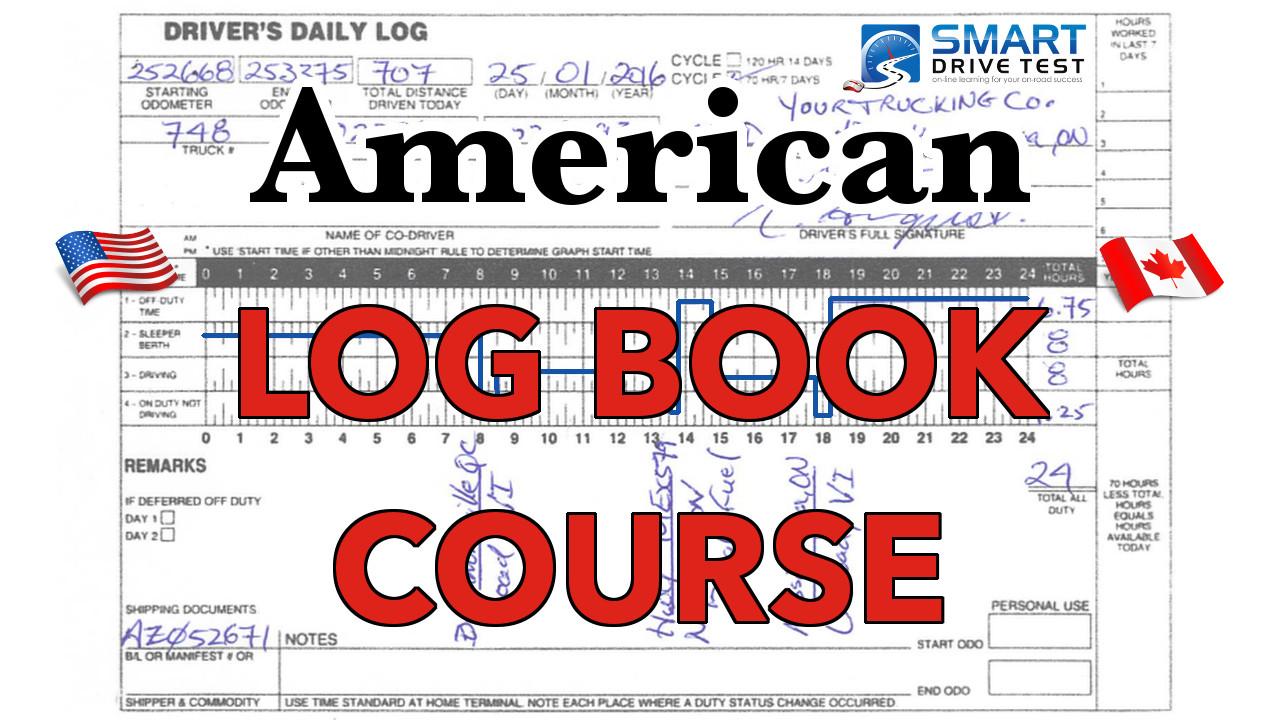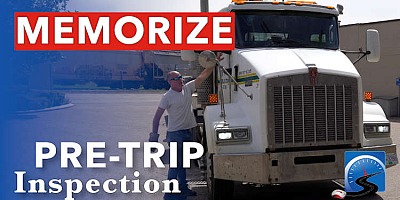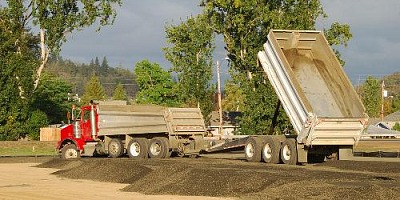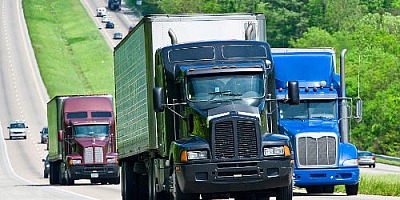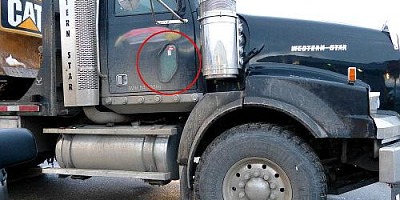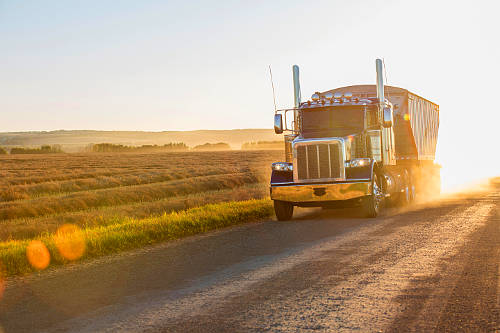Route planning is an essential skill for #CDL drivers.
Route Planning in the United States | Logbooks
Introduction
Good trips required good route planning.
Route planning is particularly relevant to long-haul truck drivers - a little bit to regional truck drivers, but for the most part it's long-haul truck drivers.
First thing about a route plan - when they give you a destination you figure out how many miles it is to that destination; what the range of your vehicle is in terms of the amount of fuel that it carries and how far you can drive on a tank of fuel.
The route plan is always going to be changing.
You're always going to be adjusting it.
It's a little bit like when they launch a missile.
The missile just doesn't go from point A to point B without being adjusted.
They're constantly adjusting that missile to hit the target and it's the same thing with what you're doing in terms of your route planning.
And communication with dispatch, with your company about your progress from point A to point B.
Next thing - it's about fatigue management, so you can drive the hours of the day that work best for you in terms of managing your fatigue.
As well it allows you to get into rest areas and into truck stops so that you can get the amenities that you want, the amenities that you need so that you're comfortable.
If you're in your truck - you're sleeping, you're living in your truck and you know you can spend some time in the truck stop you can get internet, television - you know, spend some downtime, get some rest time - maybe go to the movies those types of things.
CLICK to BUY US Logbook Course
Enter youtube30 in coupon box for 30% off course
So all of this is relevant to route planning.
Today we're going to do a route plan.
I've got a case study for you from Phoenix, Arizona to Los Angeles, and then to Barstow, CA, where you're going to have an overnight rest and then to Las Vegas, Nevada.
We're going to do another two pickups in Las Vegas, Nevada and then you're going to drive back to Phoenix, Arizona and we're going to show you how to do that route planning.
So we're going to go over the computer, we're going to do that.
Phoenix, AZ - Los Angeles, CA - Las Vegas, NV
At the computer talking to you today about route planning from Phoenix, Arizona to Los Angeles, California where you have two drops.
You're going to take a break in Barstow, California.
We'll show you how to figure out where you're going to take your break.
And we have two pick ups in Las Vegas, Nevada and then we're going to return to our home terminal in Phoenix, Arizona.
And we're going to show you how to do this on Google maps.
Google maps is one of my favorite tools and gives you some very precise information and allows you to route plan.
Google Maps - The Trip
So the first thing that you do is that dispatch is going to give you the information.
Now they may not give you all of this information at once - they may just dispatch you with a load saying you have two drops in Los Angeles, California.
When you get to Los Angeles, California, you make your deliveries and they say okay we may have a load for you in Las Vegas, Nevada and they head you up the road.
Well by the time you get outside of Los Angeles, California, you get through...
fight your way through the traffic and whatnot you know that you're probably going to make it - you know - where the Flying J is in Barstow.
On your way to Nevada, and you're probably going to have to overnight there.
So the first thing you do is when dispatch gives you the information, you get on the computer, you plug it into the computer.
So you can see over here on the left that I have plugged in all the information.
And for the purposes of our log book exercise I use Heartland Express - just as an example - in Phoenix, Nevada.
You're going to the Wine Warehouse & here's the address on 6550 East Washington.
You're also going to the Wholesale Produce Market in Los Angeles, California.
You're gonna stop at the Flying J overnight in Barstow, California.
You're going to pick up at Pacific Produce in Las Vegas, Nevada.
You're also going to pick up at the airport, which is the McCarran International Airport in Las Vegas, Nevada.
And then you're going to make the return trip back to your home terminal.
When you put all of that information into Google, down here at the bottom you can see that it gives you the route via I 10 - Interstate 10 west.
That is approximately nine hundred and forty three miles.
Two-Day Trip
So the first thing you know about 943 miles, is that you know you're going into Los Angeles, California - you're going to be able to run about 500-550 miles.
So you know this is going to be a two-day trip - so you're going to be gone overnight.
So you're gonna overnight somewhere outside of Los Angeles.
California.
You know that because it's 943 miles, so you know it's going to take you two days.
You're going to be gone two days - that's the first thing you're going to know because you're going to average about 55 miles an hour on a daily mileage according to United States rules and regulations.
You're going to be able to drive 600-650 miles.
So that's the first thing that you know and then you take the details and you can click down here on the details and it will give you the details for each one of your drops.
It will show you how long it's going to take you to drive from Phoenix, Arizona to the Wine Warehouse in Los Angeles, California and that is five and a half hours.
Now what I recommend is that you add about twenty-five percent on that time for a commercial vehicle - more so if you're heavily loaded at 80,000 thousand pounds or if you're running through mountains.
If you're running through mountains, it's going to be even longer.
Phoenix to Los Angeles
This trip is so six to seven hours.
It's probably a good average for how long it's going to take you to drive from Phoenix, Arizona to the Wine Warehouse.
So you know it's going to take you six to seven hours if you know you don't want to run into congestion.
This is the other thing that you need to think about.
What time in the morning is congestion? So you probably want to arrive in and around Los Angeles sometimes around lunchtime.
So how are you going to do that, if it takes you seven hours? So at seven hours, you're probably going to have to be leaving Phoenix, Arizona - and I mean on the road driving down the interstate at five o'clock in the morning! So how long is it going to take you to get into the yard and get your truck ready? Make sure the load's ready - is a load ready - is the trailer sitting there - is it just backing under and getting going?
How long is it going to take you?
So is that going to take you another hour? So do you need to be into the yard at four o'clock so you can get your truck ready, get all your stuff into your truck, hooked onto the trailer and banging down the road? That will come with experience about how long it takes you to get out of the yard and actually get on the road going down the road.
Don't Work the Day for Free:: DOT Weigh Scale Checklist |
||
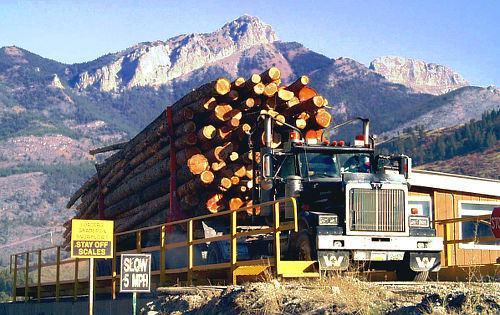
• DID YOU KNOW? :: Bus & truck drivers are the only drivers that have their own police force (DOT, CVSE, MTO, etc.);• SMART :: There's a lot of paperwork you must produce for authorities at the weigh scale;• SELF-CONFIDENCE :: Bring all paperwork in one hit & impress the diesel bears! |
||
Because in most cases, it's you that gets the fine...NOT the company! |
Buffer of Time
Because you want to always give yourself a buffer of time, even if it's five and a half hours you want to give yourself a 90 minute buffer.
Alright, so from the Wine Warehouse to the Los Angeles Wholesale Produce Market Management Office, it's 15 minutes.
Again you can allow yourself a buffer of about 45 minutes and it can take you an hour to two hours to unload, depending on the place that you get into, how long it takes you back in if you've been to this place before or not been to this place before.
If you haven't been into a place before and you have to figure out how to get into the dock, that can take up a bit of time.
If you've been there before, you know where to go, you know who to go and see, and you're not sort of wandering around these places because some of these places can be pretty big.
You can be in any where sort of seven to ten hours by the time you start heading out of Los Angeles.
So you need to look for someplace fairly close outside of Los Angeles.
You know you're on the way to Las Vegas, Nevada here and I just basically typed Flying J, California into Google and the Flying J - the locations of the Flying J come up.
So the one in Barstow, California and you can see that it's two hours from Los Angeles, California - where your last drop is - to the Flying J - so two hours.
So if you end up eight - nine hours driving from Phoenix, Arizona, making your drops in Los Angeles, then you're going to make the Flying J and you're going to still be within hours of service regulations.
You are going to stay overnight and then you can see that from the map here into Las Vegas, Nevada is two hours 15 minutes.
So depending on whatever time your pickup is in Las Vegas, Nevada.
If your dispatch gives you a pick up time or they start shipping at seven o'clock in the morning or start shipping at eight o'clock in the morning and you want to be there for 8 o'clock first thing.
Now three hours probably from the Flying J into Las Vegas, Nevada.
If you want to be there for seven o'clock, that means you want to leave at four o'clock in the morning.
Logbook Regulations
Now can you leave at four o'clock in the morning?
You started driving the previous morning at 5am - your 14-hour window would put you to seven o'clock that night.
The variable in this run from Phoenix, Arizona to Los Angeles, California would be your two drops in Los Angeles and they're probably going to take you an hour each.
So that would be two hours.
So you'll still be within your window and you're 11 hours of driving once you've got to the Flying J.
So that means that at seven o'clock at night you would have to take ten hours off-duty.
So that means that the earliest you could drive the next morning would be at 5am.
At 5am you'd still be in the Las Vegas, Nevada by 9am.
And that will give you plenty of time for your two pick ups.
So you couldn't leave at four and you wouldn't be there for seven - you'd be there between 8-9.
Pick up your other drop and then you can see here that it four hours and 32 minutes probably five and a half - six hours back to your home terminal.
And that's kind of the way that you plan it out in your head.
When dispatch gives you the information that you need to do in terms of doing route planning.
The first thing you do is you look to see how far it is total.
You can see up here on the information that it's 943 miles.
If it's a thousand miles you know it's going to be a two-day trip.
Dispatch is likely only going to give you your first drops into Los Angeles, California.
Once you get there, then you contact them and you say yes I'm unloaded.
They're going to give your next drop or they're going to say, "you know, we think we got something in Las Vegas.
"Head up the road there." And you know, just stop for the night because you're out of hours anyway, and we'll confirm it in the morning or whatnot.
So you're going to work with dispatch on this or dispatch's just going to give you the whole trip.
They're going to say, you know, here's your drops, here to pick ups and you know go and have at er'.
Fuel
Now the other thing you need to consider - is you need to consider fuel.
This is a thousand miles, so you're probably going to have to get fuel at some point and the Flying J is probably going to work out for you.
As I said in the introduction, most trucks are either150 gallons, or 300 gallon tanks and you want to figure it out about six miles to the gallon.
If you've got a 150 gallon tanks at six miles to the gallon that's 900 miles.
You're going to have to get fuel before you get back or you're just going to be running in on fumes.
So when you get into the Flying J you probably want to get fuel.
If your company buys it's fuel at the Flying J, you'll have a card.
You'll be able to get in there and get fuel.
Most places - most trucking companies - will allow you to fuel up the Flying J.
So that's the other thing you're going to have to do at the Flying J is get fuel as well.
If you got a truck that's got 300 gallon tanks on it you're going to go 1800 miles.
You'll be able to go that whole distance with tanks of fuel as well.
Some of the ways that you can do your route planning and sit down and do that and that way you're going to be able to get in and out of Los Angeles when you're not on rush hour.
Same thing with Nevada, you're not going to be in rush hour.
Obviously it's not going to be as bad as in Los Angeles, but you're still going to have rush hour that you need to think about.
Proper Rest & Relaxation
Get into the Flying J, they have good amenities.
You know you can get your television, your internet access and you know contact your family and talk to them and keep your home life going as well.
You know - good food and those types of things.
Lots of other things you can get at the Flying J and probably in Barstow, California if you wanted to that night go and see a movie or whatnot.
But this is just one of the ways that you do route planning and it will make your trip a lot more successful and a lot less eventful.
Conclusion
In conclusion, route planning is for fatigue management.
We showed you today in the case study about the trip from Phoenix, Arizona to Los Angeles, California to Barstow, California - your rest for your overnight rest.
Up to Las Vegas, pick up another trailer picked up a load and then came back to Phoenix, Arizona.
Now we also showed you Google maps.
You can drive about 600-650 miles a day according to United States regulations of driving - 11 hours a day - four hundred miles a day before you need to take a break according to United States rules and regulations.
That you need to take a break at or before the eight hour mark of your 11 hours of driving during the day.
As well, you're driving - your 11 hours of driving - has to take place within a 14-hour window and all of that will determine that you can drive 600 to 650 miles during the day to keep within rules and regulations of American hours of service.
As well, the range of your fuel - most trucks as I said - have either 150 gallon tanks or 300 gallon tank - so most trucks average six miles to the gallon.
That's a good average that'll help you to plan where you need to stop for fuel, how much fuel you're going to need in the vehicle and whatnot.
Because of your route plan you know you're going to run about 50 55 miles an hour, so you'll be able to determine where truck stops can be approximately and you're going to be able to target which truck stop you're going to be in, in terms of your destination.
If you're going into big cities like Los Angeles, you want to stop on the outskirts and then drive in in the morning because many of these places in Los Angeles, Chicago & Philadelphia will not have parking outside of the places that you're going to deliver to.
So you want to stop on the outskirts of town, get up early in the morning and then if you have a7 a.m.
appointment, for example, you get up at five and then make your way into town and you'll be there first thing when they open.
For long-haul truck drivers crossing the Canadian border, or the American border.
In your case as American drivers or Canadians - you may be driving the border allow an hour to two hours to be able to do that.
Loading and unloading, allow an hour to two hours to do that as well.
Now you're going to have GPS - don't rely solely on your GPS, especially if it's a regular GPS - make sure you go over the routes and you write down in your own handwriting where you're going to be going in terms of route planning.
And then that way it's a little bit in your head - you're not relying solely on the GPS to get you there, because GPS can unfortunately make us a little bit lazy.

